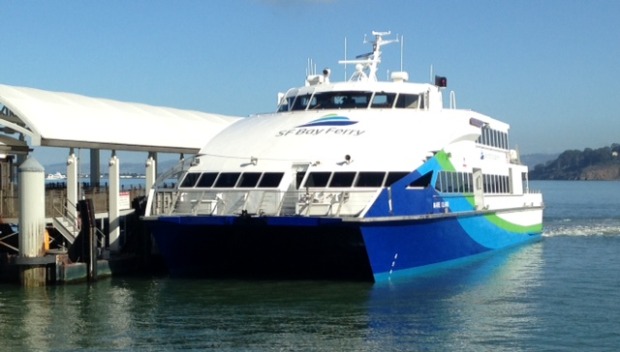
Three years away, but Richmond ferry plans steaming forward

The ferry service is a commuter favorite in the Bay Area. One of the San Francisco sites for the Richmond proposal is the Embarcadero. (Photo by Brett Murphy)
By Brett MurphyPosted November 17, 2014 7:47 am
Transforming an island into a peninsula, a tunnel to Point Richmond—now the Dornan Drive Tunnel—was completed in 1915. It was the same year that welcomed the Richmond-San Rafael passenger ferry, a commuter steamer that chugged across the Bay for more than four decades before yielding to the 1956 bridge by the same name that connected the East Bay to Marin County.
Now, in concert with the Marina Bay Parkway-undercrossing project between Regatta Boulevard and Meeker Avenue, scheduled for completion in May 2015, a new ferry is coming to Richmond. Planners say the proposal, a direct service to San Francisco, is likely to turn to reality in 2018.
“In a perfect world we’d start tomorrow,” said Chadrick Smalley, a city development project manager.
He noted that it’s imperative to have the underpass complete first so commuters won’t have to deal with capricious train schedules: “People would miss their boat.”
Having already received state environmental approval, the ferry proposal is now in the “federal review” phase, according to Chad Mason, a transportation analyst and planner at the Water Emergency Transportation Authority (WETA), which operates the key service routes in the Bay Area.
WETA’s newest expansion plan encompasses West Contra Costa County, including sites in Richmond, Hercules, Martinez, and Antioch. The federal agency would own and operate the Richmond terminal and ferry, assuming most of construction costs.
“A lot of things need to happen between now and 2018,” Mason said, referencing the federal funding agreements and approvals needed for the next steps, namely design, construction planning, and vessel procurement.
Since fares alone (between $6 and $8 each way) won’t cover operating and capital costs, the city will have to subsidize some of the ferry service.
In 1999 a San Francisco tour cruise company experimented for two years with a ferry in Richmond, but failed to attract sufficient passengers because of a slow boat, minimal scheduled trips and no operating subsidy.
Mayor-elect Tom Butt said for this project to work there first needs to be “a formal understanding between Richmond and Hercules about the appropriation” of about $22 million in Measure J funds, a Contra Costa County sales hike implemented in 2004 with the explicit purpose of transportation projects like this one.
According to a June staff report by the Contra Costa Transportation Authority, which included some financial feasibility estimates, the project’s two vessels (one as a backup) will cost an estimated $34 million total in “initial capital expenditures,” with an estimated operating costs of about $3.46 million a year (subsidized by the city and fare revenue).
According to the report, terminal construction—at the existing passenger float and gangway, adjacent to the historic Ford Assembly building and Craneway Pavilion—will cost between $8 and $12 million, the least expensive of the proposals.
The total cost of the project is estimated between $42 and $46 million. Smalley said it’s “clearly the most feasible” of WETA’s current proposals in the county.
“We think it’s a great commute option that’s environmentally friendly and fast,” he said of the service’s planned six daily tips during peak hours in the morning and evening. “The city’s general plan calls specifically for this ferry.”
The report said the high-speed, high-capacity vessel will travel 10.9 nautical miles, taking 26 minutes. That commute will rival the one from the downtown BART, with a “much higher-quality rider experience” while being “superior to vehicular modes.
Smalley also said the “backhaul” commuters—San Francisco residents working at some of the high-tech firms in Marina Bay—offer additional appeal to the proposed terminal site.
The transportation authority listed several other benefits in its report:
- The port area is one of fastest growing in Richmond, with both residential and commercial projects planned, under construction or recently completed.
- There’s already deep water and an existing gangway. Smalley added that there would be minimal construction (very little underwater dredging) needed to complete the terminal.
- That set-up “coupled with strong policy support for transit translates to a great potential for demand for ferry service.”
Stanly Anderson, president of the Marina Bay Neighborhood Council, said the project “can be a great opportunity for developers” and has the “potential to be a catalyst for the area for new businesses and restaurants.”
“It’d also be nice if it dropped people off at Giants games,” he added.
|

